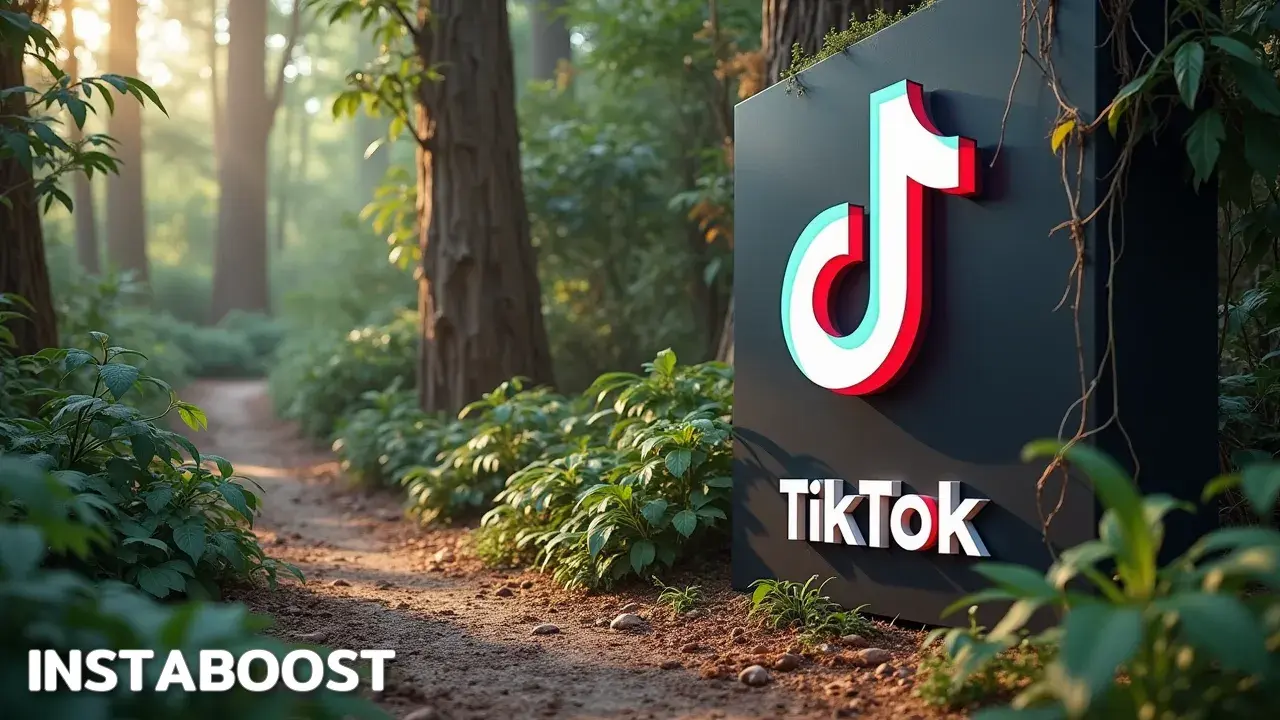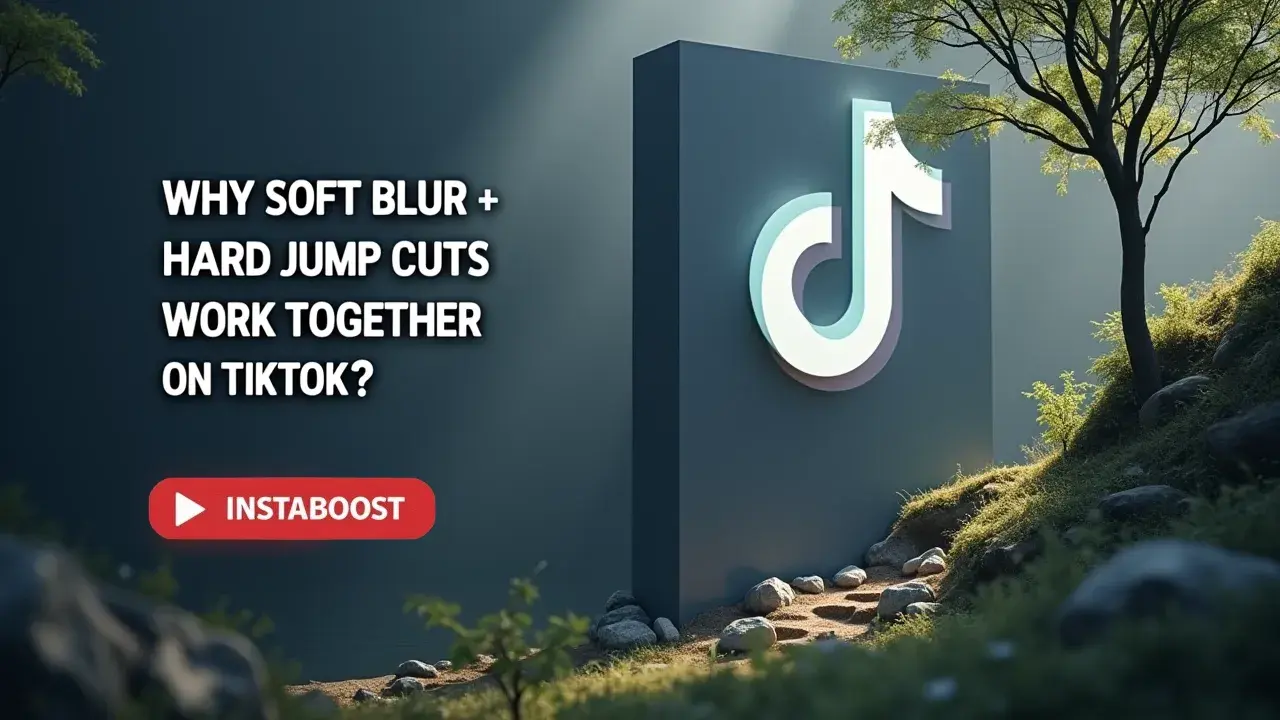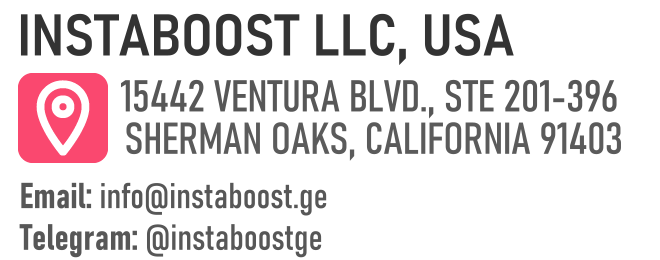Why Do Soft Blur plus Hard Jump Cuts Work on TikTok?
Combining soft blur with hard jump cuts helps maintain relaxed viewing while advancing the story decisively. This pairing trims drag without sacrificing mood, supporting faster watch time holds. Testing variations side-by-side and tagging the first hour can clarify which edits drive small bumps in replays and steadier session growth. Shares can then expand reach and compound watch time beyond likes, making it a smart path when measured and shaped well.
The Split-Second Combo That Calms the Eye and Speeds the Story
Soft blur and hard jump cuts sound like opposites, yet on TikTok they create a steady rhythm. The blur eases visual noise so the eye can rest between frames, and the cut snaps the story forward before attention slips. That push and pull is why this pairing often lifts watch time and replays without inflating production time.
It works when the blur matches intent – a subtle Gaussian on b-roll, motion blur over transitional gestures, or a background defocus to cue focus – then the cut carries the beat of the hook, payoff, or reveal. You get a feed-native cadence that reads clean at 1.0x and still feels crisp at 1.25x, which helps retention signals.
It works when the blur matches intent – a subtle Gaussian on b-roll, motion blur over transitional gestures, or a background defocus to cue focus – then the cut carries the beat of the hook, payoff, or reveal. You get a feed-native cadence that reads clean at 1.0x and still feels crisp at 1.25x, which helps retention signals.
Treat it as an editing lever, not a filter trend. Build a short testing loop with A/B versions, keep analytics clean with distinct hooks, and check the first-hour drop-off curve before you scale. If you buy early momentum with targeted promotion, pick reputable placements that fit your niche so the signals are qualified.
The best lift shows up when real comments and shares echo the storyline the cuts emphasize. For creator collabs, align on where the blur cushions a cutaway – a product swipe, a gesture, or a subtitle pop – so pacing stays consistent across raw footage. Overuse can soften edges and cover weak storytelling, but with a smart cap – gentle blur as a palate cleanser, decisive cut for movement – you keep mood while trimming drag.
Done well, this pairing supports the algorithm’s scan for completion and rewatch hints, helping your TikTok video rank sturdier in session-based discovery and search queries like “how to edit jump cuts” and improve your TikTok impact.
The best lift shows up when real comments and shares echo the storyline the cuts emphasize. For creator collabs, align on where the blur cushions a cutaway – a product swipe, a gesture, or a subtitle pop – so pacing stays consistent across raw footage. Overuse can soften edges and cover weak storytelling, but with a smart cap – gentle blur as a palate cleanser, decisive cut for movement – you keep mood while trimming drag.
Done well, this pairing supports the algorithm’s scan for completion and rewatch hints, helping your TikTok video rank sturdier in session-based discovery and search queries like “how to edit jump cuts” and improve your TikTok impact.

Proof It’s Not a Trend: The Way Viewers’ Eyes Actually Track
I didn’t add more steps – I cut the wrong ones. On TikTok, the soft blur plus hard jump cut setup mirrors how foveal and peripheral vision split work. The blur settles micro-saccade scanning in the edges, and the jump cut pulls the fovea to the next point of intent. That’s why the pairing can lift retention without padding clips. You can validate it in a weekend. Publish two near-identical edits – one with a subtle Gaussian blur on transitional frames for 200 – 300 ms and decisive cuts on beat, and one without.
Track hold at seconds 1 – 3 and 7 – 10, plus replays and shares. When the combo matches content intent – explainer, makeover, recipe, even creator collabs – you’ll usually see steadier watch curves and more comments that call out specifics like “wait, how did you switch that tool?” That’s your cue to scale with targeted promotion from reputable creators or small ad boosts, and to sanity-check any “easy growth” claims against a trusted tiktok follower source before you pollute your data. Low-quality boosts can inflate impressions but won’t lift the retention signals the algorithm reads.
The credible path is a testing loop. Keep blur at a consistent radius and opacity so brand texture stays clean, cut on semantic shifts rather than arbitrary beats, and keep analytics clean by avoiding overlapping edits in the same hour. If you sell a product, this pairing works when your hook lands pre-cut and your CTA lands post-cut, with the blur masking set changes instead of key details. It’s not a hack – it’s pacing hygiene that reduces visual noise, speeds the story, and performs on the “how to edit for TikTok” search term. The non-obvious insight is that the blur isn’t decoration. It acts like an attention tax write-off that lets the cut cash in.
Designing the Edit: How to Place Blur and Cut for Retention, Replays, and Shares
Plans evolve, and this one adapts with you. Decide what you want the viewer to notice in each beat, then use a soft blur to quiet everything else and keep a hard jump cut for when you need to steer intent. On TikTok, this pairing works when blur hits meaningful transitions like handing an object, turning a page, or moving from setup to payoff. The eye settles without feeling stalled, and the cut lands on the beat that moves the idea forward. Keep blur durations under 300 ms for scene bridges and closer to 120 ms for micro-beats. Longer than that and attention sags.
Anchor each jump cut to a change in verb, not just a new angle: show-to-tell, question-to-proof, tease-to-reveal. The cut becomes a narrative promise rather than a visual hiccup. To track real gains, run a simple testing loop. A/B the same clip with and without blur, compare average watch time and 3-second hold, then check rewatches and shares, since those compound faster than likes in TikTok’s recommendation system, and while you’re auditing signals you can sanity-check odd spikes that sometimes follow third-party boosts such as grab tiktok likes so you don’t misread the curve. If you use promotions, push only the variant with early momentum, clean analytics, and a retention curve to 70% or higher, and focus spend in the first hour to validate signals.
Pair the edit with creator collabs that fit your niche. Their comments seed credible social proof that carries viewers through the next cut. When you add captions, reduce edge clutter so the blur actually relaxes peripheral scan. Otherwise you cancel the effect. Use a reputable motion-blur plugin or native tools, and prioritize quality over complexity. Smooth edges, no ghosting, consistent direction. This scales because it respects how people watch on a small screen and turns every cut into a guided decision point.
Counterarguments You’ll Hear (And How to Test Past Them)
I’ve heard “I tried that once, didn’t end well” after a rushed A/B where a soft blur and a hard jump cut get dropped onto a cluttered storyboard or pushed through a low-bitrate export. That pushback is fair. If the blur kills edge contrast or the cut lands off-beat, the intent gets muddy and watch time slips. The better move is to isolate variables and match the technique to TikTok’s tempo. Two tweaks change the outcome. Keep blur radius and duration proportional to motion in frame – fast hands get a lighter, shorter blur, while static faces can take a slightly wider, still breathable blur.
Then align the cut with semantic change, not just musical beats. Change the idea, then cut hard. If you’re promoting, run small-budget, targeted promotion on two edits – one with blur anchored to transitions like hand-offs, page turns, or reveals, and one without, and remember that baseline volatility from things like viral tiktok views can mask whether the edit itself is doing the work. Tag the first hour, track retention dips at 0.8 – 1.2 seconds, and watch replays. If comments mention “smooth” or “clean cuts,” that’s a qualified signal. If they say “laggy,” the blur is overpowering edges.
Collaborate with a creator who shoots sharp, high-contrast footage. Soft blur complements crisp source, not noisy, low-light clips. Use clean analytics – separate drafts, consistent thumbnails, identical hooks – so you’re testing the technique, not the packaging. For product demos or recipe shorts, this pairing works when it quiets the counter mess while snapping the viewer to the next decisive action. For storytime, it works when the blur cushions the beat before the punchline. The issue isn’t that the combo fails – it’s that sloppy execution hides its value. Calibrate, then measure replay rate and shares. On TikTok those two compound attention faster than likes and show why soft blur with hard jump cuts isn’t just a trend – it’s an eye-tracking tool.
From Tactic to System: Ship With Signals, Not Hunches
This wasn’t a conclusion. It was a confrontation. You’re not just mixing soft blur and hard jump cuts – you’re building a repeatable system that turns attention into measurable lift on TikTok. Lock a clean baseline cut first. Use blur only where a transition needs quiet – hand-offs, page turns, setup to payoff – and keep the cut for steering intent on the beat that advances the idea. Tie it to outcomes.
Tag moments in the timeline, watch first-hour retention and replays, and compare side-by-side exports so you’re testing the technique, not a messy storyboard or low bitrate export. It works when your blur preserves edge contrast and motion vectors, your cut hits the downbeat the ear expects, and your captions, comments, or creator collabs amplify the narrative you’re pointing at – the same mechanics that tend to spark shares that increase TikTok reach without leaning on vanity metrics. If you’re running paid accelerants, test with reputable delivery and clean analytics so you can see whether the pairing lifts average watch time or just inflates impressions.
The lever compounds when you add retention signals – pin a clarifying comment at the precise cut, stitch partners at the payoff, and push targeted promotion only after the edit sustains a hold above your median. The non-obvious win is that the blur isn’t decoration. It’s load balancing for the brain so the hard cut can carry meaning without fatigue. That’s why this combo drives shares, which expand reach into new circles and nudge session growth more reliably than likes. Treat every post like a micro-study. Isolate variables, match tempo to trend audio, and keep a live testing loop. Soft blur plus hard jump cut works when it’s matched to intent, timed to music, and measured tightly – ship that, then scale it.















